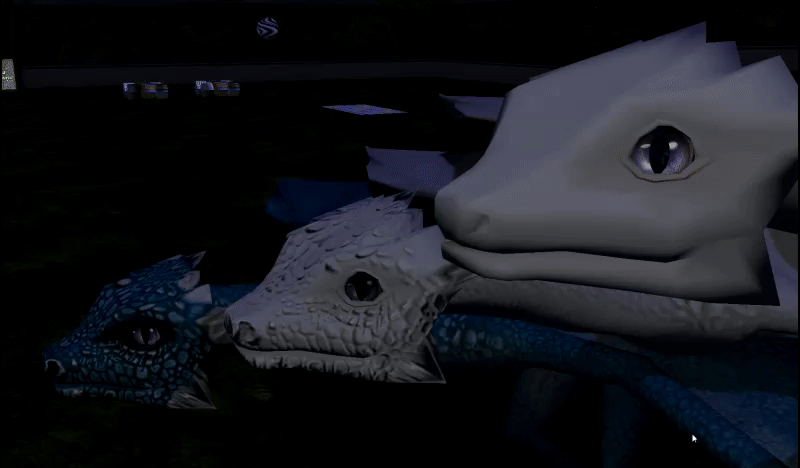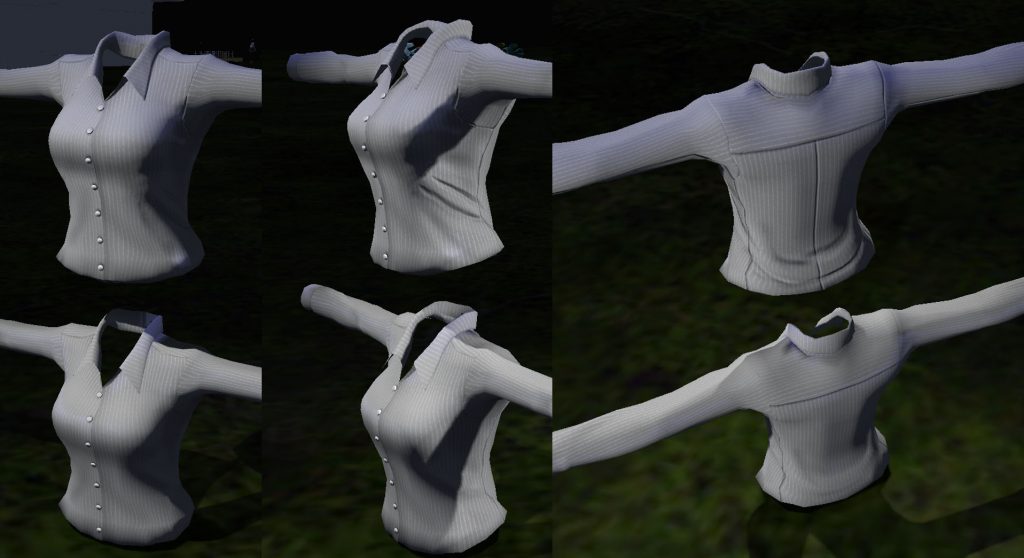There has been a lot of talk, recently, with regard to what is and isn’t possible within the platform when it comes to content creation and detail. We see this complaint come up commonly with all content, but more recently this has become more of a touchy issue with the coming of Animesh (animated mesh) objects, which are currently being tested on the Beta grid.
As things go, Animesh is currently limited to 20Ktris per linkset, which means that content creators have to be very cautious about the complexity of the models they intend to use.
The most immediate use case being presented are full scale animated NPCs based on existing mesh content (bodies, clothing, hair). Additional use cases include accessorizing of rezzable pets, customization of vehicles, and more.
However, the efficacy of Animesh in terms of accomplishing those goals is questionable.
As things stand, the current limitations (20KTris per linkset, minimum 200LI cost for animated mesh objects) are deliberately conservative so as to accurately assess graphic and server load under heavy use. These limitations are likely to change, but some of the suggestions as far as to what degree have been quite far-ranging. At recent user group meetings, we’ve seen suggestions anywhere from 100-500KTris per linkset so as to accommodate clothing, hair and body mesh.
This might not seem like a lot but for the moment let’s argue that the average fashionista might themselves average between 250-800Ktri range. Today in SL, this is only just manageable in a room with multiple such avatars because we can now elect to filter out performance-heavy individuals by using Avatar Complexity filters. (If you frequently allow your viewer not to do this, chances are you spend a fair amount on a new video card every couple of years. Not everyone can afford that!)
There is no immediate indication that we will have any similar functionality with Animesh. Apart from the polycount restriction and LI, there is also no immediate restriction on how many animesh can be drawn by your camera. As such, placing multiple such linksets in a given area may well create a negative experience for a large portion of the SL userbase, who may not have the most up to date equipment for enjoying Second Life.
It begs the question of content creators – Notwithstanding any easement of these restrictions, what can we as content creators do to create more efficient models for use as Animesh (or even for daily use on our own avatars)?
Design with efficiency in mind.
There are many workflows out there. Some of us are working with Blender, Maya, 3DSMax, SketchUp, ZBrush or even Marvelous Designer.
I am hesitant to point out any one workflow as being ‘bad’, but frankly some of these workflows are designed for higher-detail applications and not for immediate use in gaming.
Does this mean I think they shouldn’t be used?
Not at all, however it’s important for content creators to understand what kind of issues they are introducing to the viewer experience when they present un-optimized content to the consumer market, what the repercussions may be and how to mitigate them.
For example, Marvelous Designer allows designers to create garments based on traditional patterning and to see how those garments will fall on an avatar, but even with the recent addition of its quadrangulate functionality, it produces mesh with counter-intuitive edge flow. Additionally, the common practice with MD is to simply export a high-poly mesh to include fine details and call it a day, without regard to how that might impact the viewer in SL.
We have similar problems with ZBrush, which can handle millions of vertices at a time and which does have a means of retopology (making something less complex), but which still requires a lot of tweaking to create something with good enough edgeflow to work well in lower poly situations.
You can work from low-poly to high or high-poly to low based on your preference, but it should be noted that the average avatar doesn’t actually *need* Pixar-level graphic fidelity in their everyday SL experience.

Rather than importing garments to SL with every possible nook and cranny modelled in geometry, designers can (and should) make use of the tools afforded them by advanced materials! This can be done by baking down some of the details from their higher-poly models to diffuse maps but also by creating normal and specular maps that will take advantage of textures instead of geometry to create detail.

With this sort of workflow in mind, a 20KTri blouse could easily be reduced to 4-5KTri with minimal detail loss.
Even more savings can be had if animesh are designed and modelled with these restrictions in mind, rather than cobbled together from multiple sources.
With a custom designed animesh human, for example, there is no need to include a full mesh body – only those parts which are visible need be included. Clothing, hair, accessories – all of these can be developed with efficiency in mind to fit the criteria for Animesh limits.
Level of Detail models are also helpful with reducing viewer load at a distance, given the fact that Animesh do not currently become imposters at a distance (even though they express sped up animations just as avatars do).
Balance
Of course, it’s helpful not to think of SL purely in terms of efficiency. We could all just wear stick-figures or rez them and call it a day… but if the visual element were removed what would be the point?
Instead, I’d love to see limitations on these resources to encourage both more efficiency as well as stylistic choices that deviate from the norm. There is a vast niche of style that continues to go untapped within the platform and I’d be really interested to see more interesting art styles rather than a constant push towards photo-realism, personally.